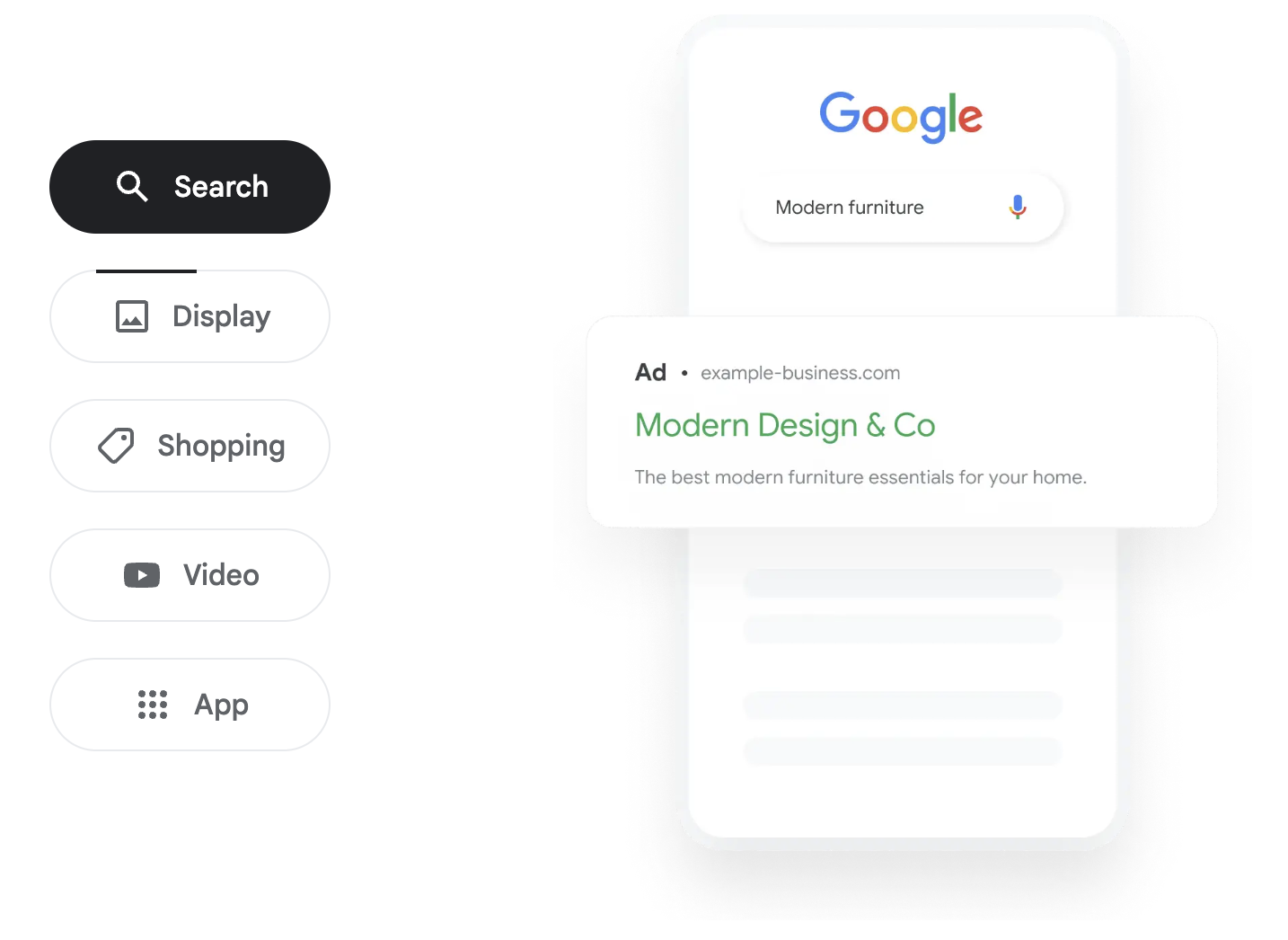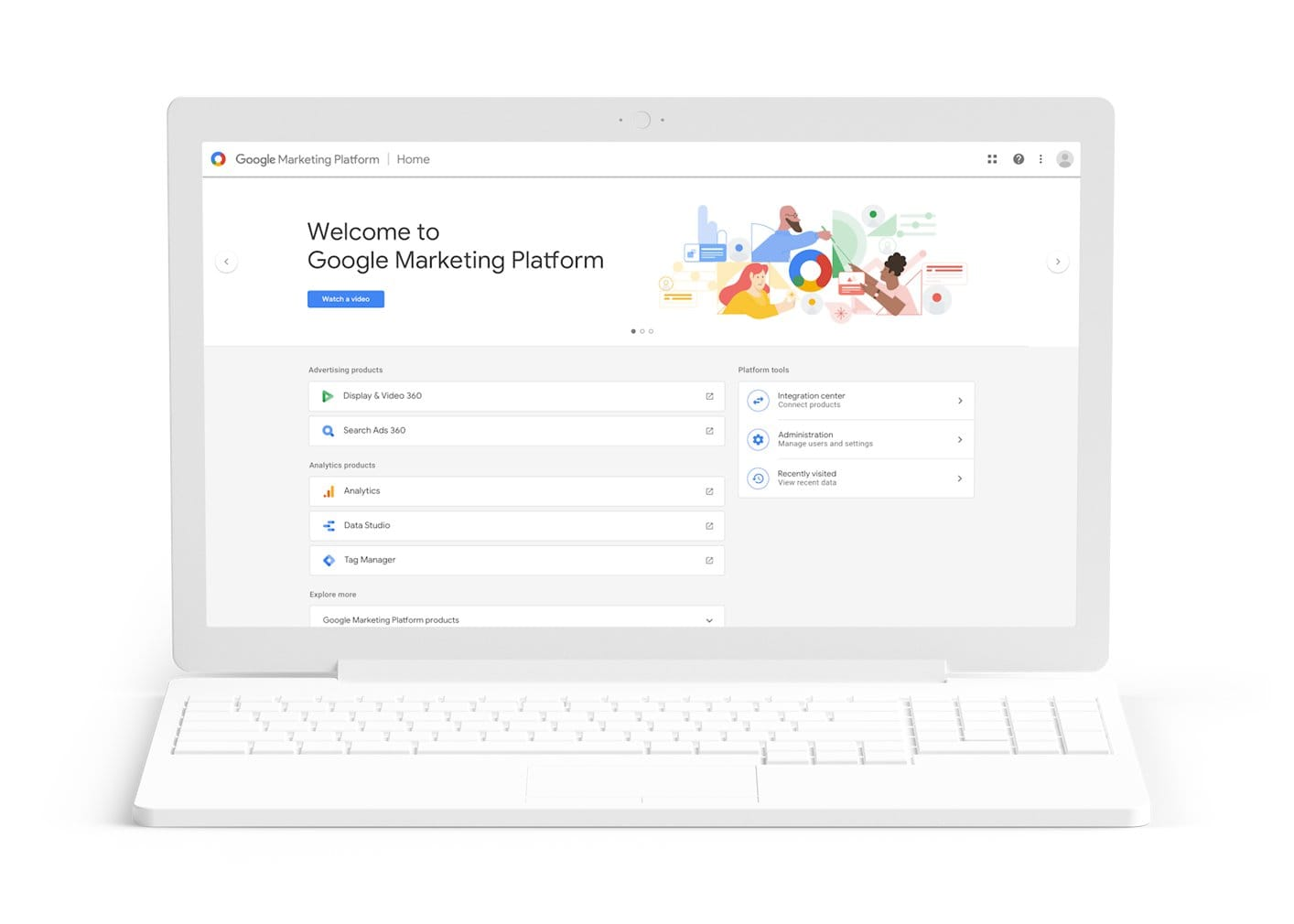It’s nearly 25 years since Google launched AdWords (now GoogelAds), which changed the landscape of digital advertising forever.
Since then, lots has happened, with many changes in the last year, like Google Marketing Platform and Google Analytics 4, which many universities and colleges have had to adapt to.
Using advanced tools and platforms can enhance your recruitment efforts, and Google offers a suite of powerful solutions that can help your higher education marketing strategies for recruitment.
But which is right? What’s the difference between all these suites and products?
In this article, we break down the main services and products to help you with your online advertising platform strategies.
What’s been happening in the world of analytics and ads?
After having already said goodbye to third-party cookies, last summer, marketers have had to move their website properties to Google Analytics 4 (GA4), which was introduced to provide a more comprehensive and user-centric approach to analytics.
With it, universities and colleges can obtain better information about event tracking, machine learning, and cross-platform tracking for a more holistic understanding of student visitor behavior.
There’s also no discounting the impact of AI and machine learning and its integration in analytics tools. These technologies, for those who have harnessed them, help institutions to predict visitor behavior, analyze trends, and make data-driven decisions.
And with increasing concerns about data privacy, there's a growing emphasis on tools and practices that comply with regulations like GDPR and CCPA, including features that help you anonymize data, track user consent, and improve security.
AI has also come on the scene, which will play a significant role in ad creation, targeting, optimization, automated ad generation, and AI-driven targeting.
Programmatic advertising, an automated, data-driven approach to buying and optimizing digital advertising space in real-time (think algorithms), also continues to grow, with more automation and targeting.
Video advertising likewise shows no sign of slowing down, with platforms like YouTube, TikTok, and others seeing an increase in video ad formats, often aimed at Gen Z.
New privacy regulations have also meant changes to the advertising landscape, leading to a shift in how you might need to target and track visits from prospective students.
What’s the difference between Google Ads and Google Marketing Platform?
Google Ads and Google Marketing Platform are different suites of digital advertising tools.
Google Ads

Image source: Google Ads
Google Ads is the umbrella term for Google’s primary advertising self-service platform, and it includes:
- Search ads, which are text-based ads that appear on Google's search engine results pages (SERPs) when users search for specific keywords.
- Display ads, like banners and interactive ads, which show up on websites and apps within the Google Display Network and other partner sites.
- Video ads, which are in-stream ads that play before or during YouTube videos.
- Shopping and app ads, which are listings of products on the Google Shopping results page, and ads promoting mobile apps across Google platforms, respectively.
Google Marketing Platform

Image source: Google Marketing Platform
Google Marketing Platform (GMP) is more comprehensive and was created with large enterprises and agencies in mind. It’s a platform rather than a single product.
It integrates with other sources like CRM systems, email tools, ad platforms, and offline data sources.
GMP offers a more unified and integrated approach to digital marketing, which includes:
- Campaign Manager 360, a cross-channel ad management product to plan, execute, and measure ad campaigns that gives better visibility and workflow across all your digital campaigns.
- Display & Video 360 (formerly DoubleClick Bid Manager), which is a real-time programmatic platform for display and video advertising.
- Search Ads 360 (SA360, formerly DoubleClick Search), which is a search management platform that allows you to manage campaigns across multiple search engines (e.g., Bing), use Machine Learning to Target CPA (Cost Per Acquisition) and Target ROAS (Return On Ad Spend), set up A/B testing, and manage SEM campaigns.
- Google Analytics 360, which is the premium version of Google Analytics, It offers advanced features and capabilities along with detailed insights into user behavior, website performance, and marketing effectiveness.
How higher education marketers can use Google’s platforms

1. Google Search Ads 360
For higher education marketers, SA360 is a game-changer for search engine marketing. You can use the platform to manage and optimize paid search campaigns, not only on Google but across multiple search engines. This means you can expand your reach and capture the attention of prospective students actively searching for relevant programs.
How can you use it?
You can use SA360 to target prospective students actively searching for relevant programs, while DV360 (see below) captures their attention with visually engaging campaigns.
Imagine your university is launching a new data science program. Using SA360, you can identify relevant keywords related to data science education and use bidding and optimization strategies to make sure your ads are visible when potential students search for terms like "data science degrees" or "best data science programs."
2. Campaign Manager 360 (CM360):
CM360 is the go-to solution for higher education marketers aiming to streamline ad serving and campaign management across diverse digital channels. This means you can make the most of your video and rich media campaigns reach prospective students and track results or optimize the campaigns in the Google Marketing Platform.
How can you use it?
For example, if your university wants to promote an upcoming virtual open house, you could do it through display and video advertising with CM360, tracking how students interact with them and optimize the campaigns based on performance data. This centralized approach streamlines the process and provides a comprehensive view of your campaign's success.
3. Display & Video 360 (DV360):
If you’re trying to have more impact through visually engaging content, you can use DV360, which is a comprehensive solution with programmatic ads, advanced metrics, and targeting options to tailor campaigns to specific audiences.
How can you use it?
Your university can increase awareness of specific online courses, for example, by using DV360 for programmatic buying. If you create visually compelling display ads, you can use DV360's advanced targeting options to reach a specific audience, such as prospective students interested in online education, across various websites and apps. You can then monitor how the campaign’s doing in real-time, adjusting your strategies based on the data to maximize engagement and conversions.
4. Google Analytics 4:
To enhance the effectiveness of your recruitment efforts, GA4 offers a more holistic understanding of user interactions across websites and applications, providing valuable insights into user behavior across your digital channels.
How can you use it?
You can use event tracking to understand how prospective students interact with your website and leverage integration with other Google Marketing Platforms for a unified data-driven strategy. For example, if you set up specific events, such as "Virtual Tour Sign-up" or "Course Information Download," you can track how prospective students interact with your university's website.
If you integrate GA4 with other Google Marketing Platforms (including SA360, CM360, and DV360), you’d have comprehensive data to understand user journeys, identify successful touchpoints, and make informed decisions to optimize recruitment efforts and content strategies.
Bringing it all together with a unified approach to drive recruitment
Let’s say your campaign aims to drive enrollment for your online master's program in medicine.
Here’s how you would integrate these platforms, you can create a seamless, data-driven recruitment advertising strategy.
1. You could use SA360 to launch search ad campaigns for relevant keywords. You’d create ad copy highlighting the program's unique features, career opportunities, and benefits. Then you’d use bidding strategies and SA360's cross-engine capabilities to manage campaigns on Google and Bing simultaneously
2. You could also use DV360 to run visually appealing video ads that maybe showcase the faculty, curriculum, and success stories. You would then use programmatic buying to automate ad placements and maximize reach to raise awareness about the program to wider audience across various relevant websites and apps.
3. Then, you would use CM360’s reporting capabilities to monitor the performance of the ads, tracking ad impressions, clicks, and conversions in real-time. This lets you optimize the content if you see fit.
4. Next, you can set up specific events in GA4 to track crucial interactions, such as inquiries, brochure downloads, and application form submissions to get a deeper understanding of user interactions across your university's ad landing pages to conversion.
5. You would then use Google Marketing Platform to identify the best-performing channels and readjust, as it integrates real-time insight from SA360, DV360, CM360, and GA4.
Whether it's getting more precise search engine marketing, more efficient ad management, or better planning and measurement for display and video advertising, you can attract and engage prospective students more effectively by integrating your platforms and adopting a unified and data-driven approach.
Have you had success with a holistic student recruitment campaign recently? We’d love to hear about it. Let us know in the comments below or on social media.

:format()//media/google-ads-suites-for-higher-edcuation----RQ.png)